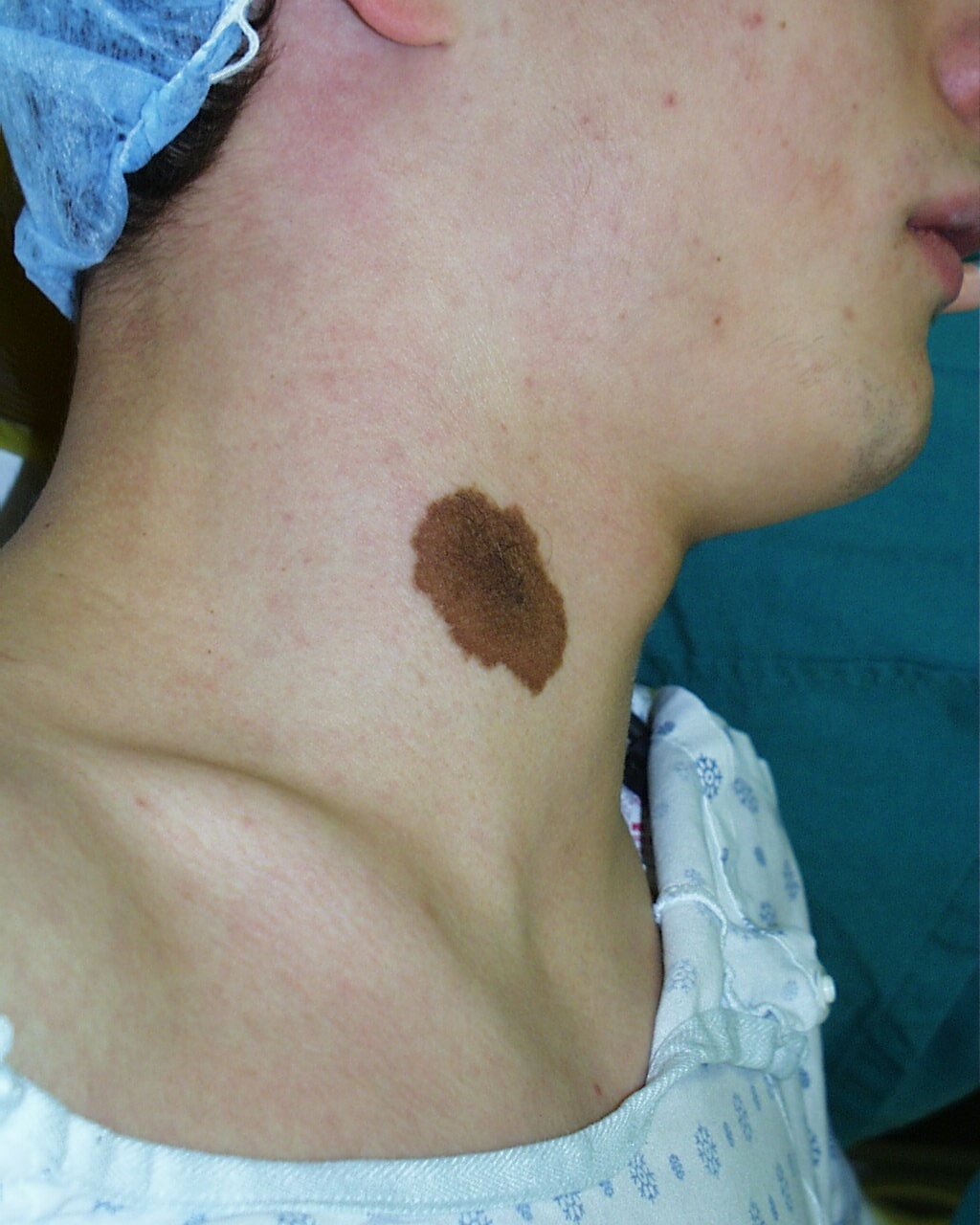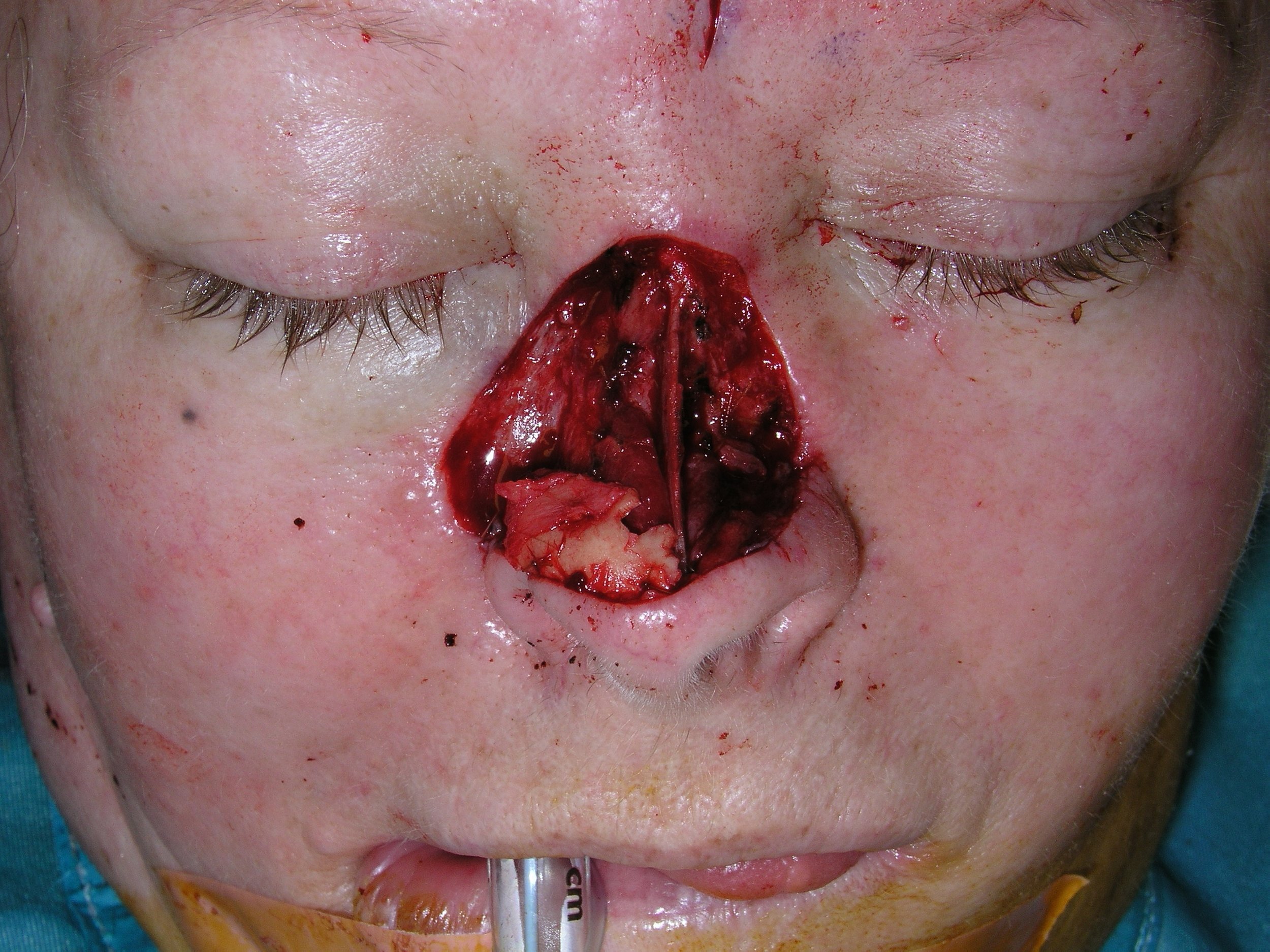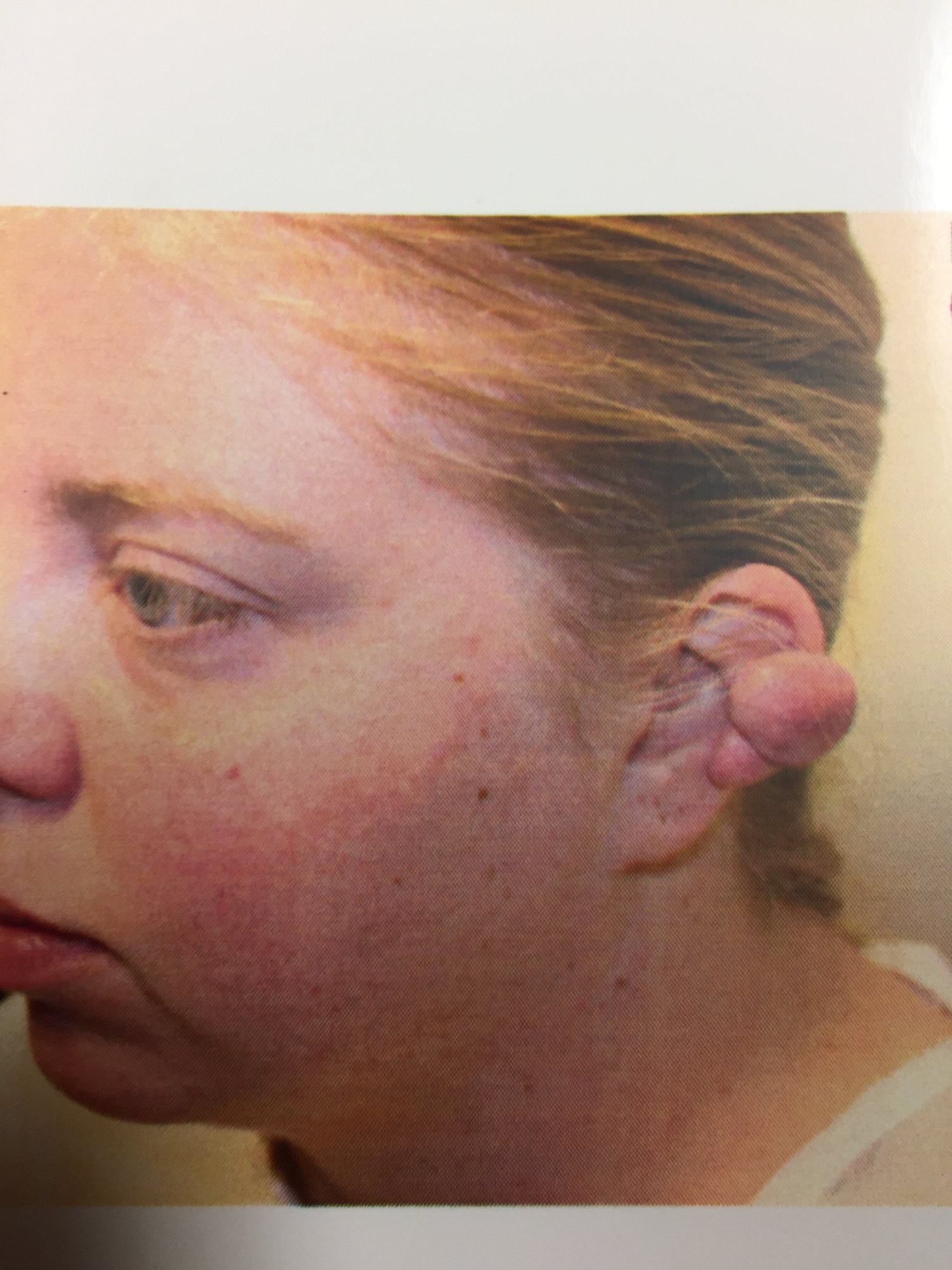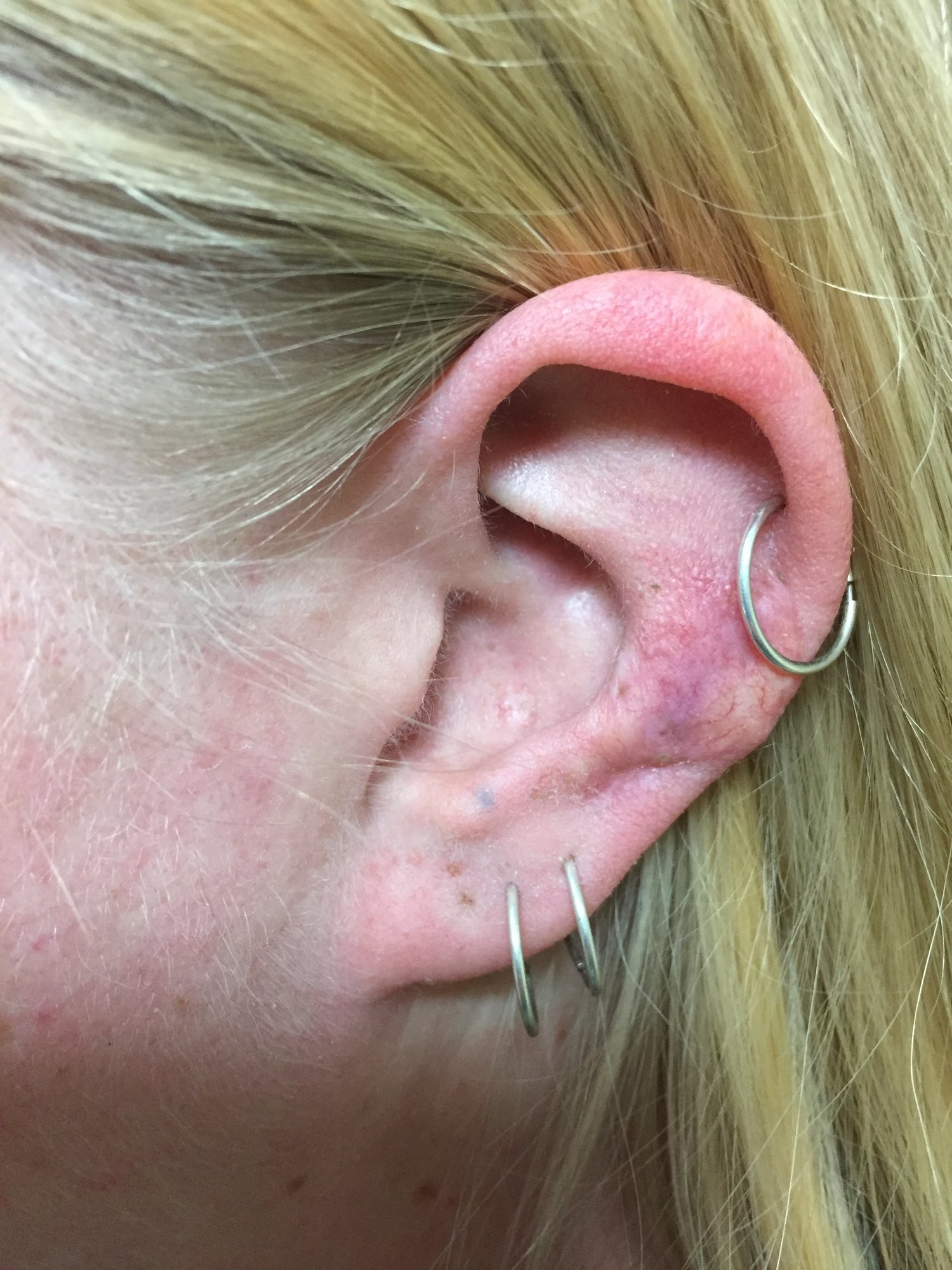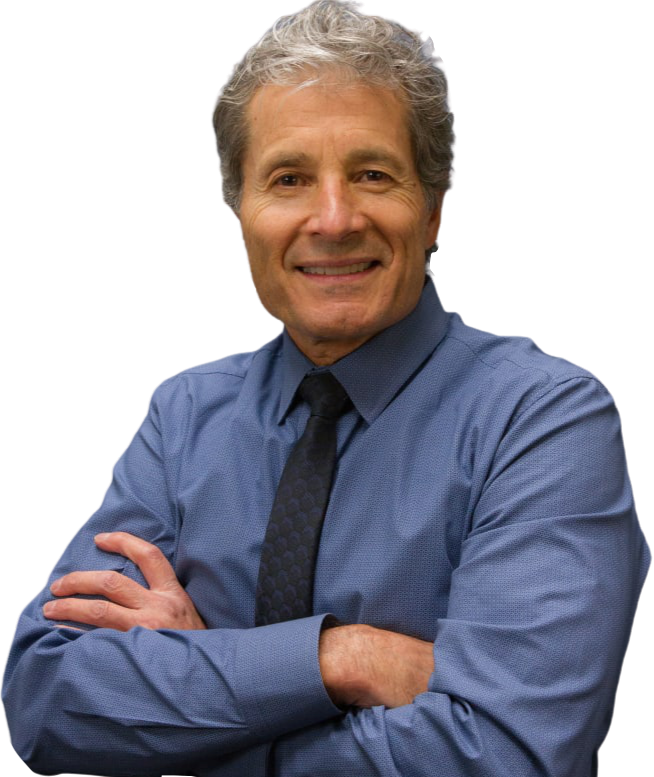
Other Body Procedures
*DISCLAIMER: THIS SITE CONTAINS GRAPHIC & SURGICAL IMAGES THAT MAY BE DISTURBING TO SOME VIEWERS.
THIS SITE IS INTENDED FOR INDIVIDUALS OVER THE AGE OF 18.
**None of the images on this site have been enhanced or photoshopped.
*Tap a patient image to enlarge & view the full series of pre and post-operative images.
Thigh Lift - Medial Thigh Lipectomy
Before the Surgery:
+ What is a Medial thigh lipectomy?
This is a surgical operation to improve the appearance and contour of the upper inner thigh by removing fat and skin from the upper inner thigh part of the thigh.
It does not improve the front and outer thigh, nor the knee or the hip area. These areas may accumulate excess fat which will respond to liposuction.
*Please tap here to see FAQ Liposuction.
Skin excision in the outer thigh is not done.
+ Who can have this operation?
The typical patient who is a candidate for a medial thigh lipectomy procedure has:
- excess skin
- skin and fat over the upper inner thigh area that has not responded to weight loss and/or exercise
This is common in patients with significant weight loss, or, in patients that have inherited a predisposition to accumulate excess fat in the medial upper thigh area.
This applies to both men and women.
+ Why does excess fat accumulate in the medial upper thigh area?
Patients distribute excess fat differently.
The typical fat distribution in women, and in some men, is peripheral. This means the excess fat can occur in the layer between the skin and the inside thigh muscles.
Excess hanging skin can develop in the upper inner thigh area if the patient has lost a large amount of weight. Patients who have undergone bariatric surgery with a large amount of weight loss, or, patients who have lost a large amount of weight through a life style change in diet and exercise may develop this hanging skin.
There often is varying amounts of fat within this hanging skin pannus.
There may be no excess skin, just excess fat, which creates a large heavy inside thigh. This is often associated with heavy knee, calf, and ankles.
The skin fat pannus does not involve the muscle of the upper thigh and therefore, exercise will not improve or eliminate the medial thigh pannus.
+ When can a Medial thigh Lipectomy be done?
The timing for a thigh lipectomy procedure is most often planned after the patient’s weight is stable.
Patients have often unsuccessfully tried to improve the medial thigh contour with exercise. This is often successful for the outer and front part of the thighs and calves, but not the medial thighs.
Dr. Giuffre advises that the patient comes into the thigh lipectomy surgery at a weight that is a “no brainer weight”: a weight that is stable that the patient has maintained for months or years based on their current life style.
Then there will be no extra ordinary effort for the patient to maintain this weight after surgery. The surgical result with then be maintained without changing the patient’s life style.
+ What if I lose weight after surgery?
Weight loss after a thigh lipectomy surgery will not affect the result of the surgery, but will reduce other areas of body fat over the hips, arms, buttocks, and reduce thigh circumference.
Postoperatively, a change in life style to permanently lose weight will not affect the result of the thigh lipectomy surgery.
+ Am I a candidate for a Thigh “Liposuction” without removing skin?
Most commonly, thigh liposuction is a procedure designed to correct the contour of the upper outer thigh contour (saddle bags) by removing only fat from the outer thigh and the outer 1/3 of the buttock area without disturbing or cutting the skin.
If there is no excess skin in the upper inner thigh, and there is a contour deformity in the inner thigh, caused by excess fat in this area, with no loose hanging skin, a medial inner thigh liposuction may also be done with the outer thigh and buttock liposuction.
Other areas that are often liposuctioned at the same time as the upper and inner thigh, and outer buttocks areas are, the hips, the mid-back area under the bra line, the inside part of the knee, and the upper calf area.
The liposuction procedure is reserved for patients with heavy areas caused by excess adipose tissue, with a fairly tight skin envelope (no excess hanging skin).
After the excess fat is removed with a liposuction technique, the skin must have enough elasticity and recoil to shrink around the reduced thigh, buttock, back, and knee areas.
This procedure is typically reserved for a younger patient population.
In the consultation with Dr. Giuffre, the thigh lipectomy versus the thigh liposuction options will be discussed.
+ Can this procedure be used for massive weight loss patients?
A large amount of weight loss can produce excess skin in all areas of the body that have lost a considerable volume of tissue.
This includes the inner thighs. It also occurs in the arms, breast, abdomen, hips, flanks, buttocks, and legs.
+ Is Medial (inner) Thigh Lipectomy surgery covered by AHS (Alberta Health Care) if I get a referral from by GP?
The thigh lipectomy, or any liposuction procedures, are considered a cosmetic procedure by AHS and are, therefore, not covered even with a referral from the Family Physician.
+ I am a massive weight loss patient. Can I have a Medial (inner) Lipectomy and is it covered by AHS (Alberta Health Care)?
The thigh lipectomy, or any liposuction procedures, are considered a cosmetic procedure by AHS and are, therefore, not covered even with a referral from the Family Physician.
Surgery should be deferred until the weight loss has stabilized
The Operation:
+ Do I have to go to sleep (General Anesthesia) to have a Medial Thigh Lipectomy?
A General Anaesthetic is required in all cases.
Please tap here to view liposuction in 3D.
+ How long does the operation last?
Approximately one and a half hours to two and a half hours.
+ Where is the surgery done?
Dr. Giuffre uses a private surgical suite adjacent to his Meadowlark Health Centre Office (#176) for his cosmetic procedures.
Please see https://www.meadowlarksurgicalcosmetic.com
+ Where is the incision for a Medial Thigh Lipectomy?
The incision starts by the outer hip bone, 1-2mm above the groin crease.
The incision follows the crease, through the inside upper thigh to the buttock crease.
Up to 7cm of skin and fat are removed.
Medial Thigh Liposuction may also be done at the same time.
The incisions are then closed by lifting the inner thigh skin to the groin and buttock crease.
Dissolving sutures and surgical clips are used.
+ Will there be a scar?
Yes. Any incision in the skin, regardless of where in the body will heal with a scar. The scar will mature (the scar color goes from red, to pink, to white, and the scar softens and becomes pliable) which can take 1-2 years. Medical paper tape placed directly over the incision and changed weekly for 3 months will help speed up the process of scar maturation.
+ Will I have stitches?
Yes. They are under the skin and absorb (disappear by themselves) therefore, there are no sutures removed.
The additional use of surgical staples to reinforce the incisions is often used. These are removed within 5-6 days after surgery.
+ What happens surgically in a Medial Thigh Lipectomy?
Before the surgery, with the patient standing, the surgical plan is made by drawing on the groin area and in some cases the inner thigh seam.
The amount of skin and fat excision is planned. This is often 7 centimetres or more in width.
A photo graph is taken. The patient will receive a copy of the preoperative photograph at the 6 week check with Dr. Giuffre.
Once the patient is asleep (General Anaesthetic) the incisions are made.
The excess skin and fat is removed; the muscles are left undisturbed.
The incisions are then closed with self-dissolving stitching under the skin.
A drainage tube may be place in the surgery site but this is uncommon.
+ What happens after my surgery?
- You will have a firm tensor bandage-like binder dressing on for the first day after surgery.
- You will be seen the next day after surgery where all of the dressings will be removed.
- You may then shower. No further dressings are required.
- You are discouraged from having a bath, hot tub, or swimming for 6 weeks following surgery.
- You are encouraged to walk the day of surgery to avoid the risk of blood clots in your legs (during the surgery you will have had special sequential stocking on your legs that maintains normal leg circulation)
- If there is a drainage tube, it will be removed when the drainage is 25cc’s in 24 hours for a day or two.
- You are encouraged to ambulate the day of surgery in order to avoid the risk of developing blood clots in your legs.
- Resumption of regular light daily living tasks is encouraged
- Arrangements will be made to see Dr. Giuffre at 6 weeks postoperatively
+ Is the Medial Thigh Lipectomy procedure painful?
Before waking from the surgery, Dr. Giuffre will inject a long acting local anesthetic into the thigh area to decrease any immediate leg discomfort from the surgery.
When the freezing wears off, the patient will require postoperative analgesic medication (pain killers) for up to a week. The discomfort typically subsides after the first two to three days following the surgery.
*Patients taking prescription pain killers should not drive a car, operate machinery, or sign significant documents while taking this medication.
+ Do I go home the same day as Surgery?
Yes. You will have to arrange a ride and aftercare with a responsible adult.
You are not permitted to leave unaccompanied or in a taxi.
+ I live out of town. Should I stay overnight?
If your driving distance from Edmonton exceeds 90 minutes, you should make arrangements to stay overnight in Edmonton.
The surgical centre does not have an overnight care facility.
You will then be seen the following day for dressing removal and assessment by Dr. Giuffre and his staff.
+ Can I contact my surgeon the day or night of surgery if I have a concern?
Yes. Dr. Giuffre provides his home phone number to his cosmetic patients in case there is a patient concern.
In the rare instance that a patient requires hospitalization, Dr. Giuffre has admitting privileges to all the major hospitals in Edmonton.
+ When do I see my surgeon after surgery?
You will be seen the day following surgery by Dr. Giuffre and/or his nursing staff, and again within the week following your surgery by Dr. Giuffre.
Further follow up arrangements will be made at that time.
+ When can I shower?
A shower is okay after the first dressing change, which is usually done the next day after surgery. It is okay to get the incision wet from a shower, but Dr. Giuffre recommends that you avoid a hot tub or bath, swimming pools, lakes, or ocean swimming for 6 weeks following surgery.
+ In what position can I sleep?
Any position that is comfortable.
+ When can I resume relations with my partner?
6 weeks is recommended.
+ What should I do to minimize scarring?
Vitamin E oil and Bio oil are not proven to positively impact scar healing.
Dr. Giuffre recommends medical paper-tape be placed on the incision for 3 months, changed weekly by the patient.
+ How long should I plan to be off work?
The typical time off work is two weeks. If your work is extremely strenuous and involves heavy lifting, the time off work will be longer.
+ How long am I off sports and my workouts?
No sports or strenuous activity for 6 weeks. Patients are to avoid strenuous activity that increases their heart rate and blood pressure. This could produce bleeding inside the surgical site. The rule of thumb is, if you are sweating from the activity, you are over doing it and you are placing yourself at risk.
+ What about eating and drinking after my Medial Thigh Lipectomy?
Regular food and beverage consumption, as the patient did preoperatively, is recommended.
+ Are there before and after pictures?
Yes. Every patient that Dr. Giuffre operates on for cosmetic reasons will have a preoperative photograph taken. At the 6 week check up with Dr. Giuffre, his patients are given an 8 x 10 preoperative photograph.
Postoperative photos are also taken in some instances.
The Risks:
+ What are the risks of doing a Medial Thigh Lipectomy procedure?
With any surgery there are surgical and anesthetic risks.
Aside from the rare risks of an anesthetic event, some of the general and specific surgical risks for this procedure would include:
- Scarring
- Descending scar below the groin crease
- Infection
- Swelling and bruising
- Sensation change to the groin and thigh area for up to 3-6months
- Discomfort
- Time off work and exercise
- Bleeding (hematoma)
- Seroma (fluid collection in the operative site)
- Tissue loss in patients that smoke
- Contour asymmetry
- DVT (Deep Venous Thrombosis)
*This list is not complete.
During the consultation with the patient, Dr. Giuffre will outline and explain each of the risks in detail.
The Followup:
+ How often do I need to come back for a checkup after the surgery?
Postoperative visits include:
- a 24 hour visit
- a 1 week visit
- often a 2 week visit
- a 6 week visit
If there are any patient concerns, Dr. Giuffre provides his home phone number for patient's direct access.
After the 6 week visit, if there are any future requests for an appointment, they are made directly with Dr. Giuffre's office and an expedited visit is arranged.
+ I no longer have access to my original surgeon. What can I do?
For cosmetic or reconstructive concerns, patients are invited to contact Dr. Giuffre's office (780-428-7737) for an appointment.
Dr. Giuffre does not require a referral. There is no charge for the consultation.
+ I had a Medial Thigh Lipectomy with another surgeon and I am unhappy. What can I do?
It is always wise to re consult with your original surgeon, in order that he can assess you and your concerns.
If that fails or you are still unhappy with your options, you can always seek a second opinion. Dr. Giuffre would communicate your concerns with your original surgeon in order to facilitate a resolution.
+ I had a Medial Thigh Lipectomy in another country. I have a problem. What can I do?
For cosmetic or reconstructive concerns, patients are invited to contact Dr. Giuffre's office (780-428-7737) for an appointment.
Dr. Giuffre does not require a referral. There is no charge for the consultation.
+ I had a Medial Thigh Lipectomy years ago. I have gained weight and I am unhappy with my result and scars. What can I do?
This can happen from weight change, aging, and menopause. A consultation with Dr. Giuffre is recommended to review the cause and options for improvement.
Financing:
+ Can I finance the costs of the surgery? How do I do this?
Dr. Giuffre does not provide in house financing for cosmetic procedures.
There are a number of companies across Canada that will finance cosmetic surgery, similar to car financing or mortgages. Please refer to this link for more information.
*Dr. Giuffre has no financial or business relationship or affiliation with any of these companies.
+ If something goes wrong, do I have to repay for the operation?
You do not have to pay for the treatment of an immediate complication. In the unusual event that there is a problem with your original surgery, you do not have to pay for the correction.
+ How much does it cost?
The cost of cosmetic surgery is covered entirely by the patient.
The one fee would include:
- the cost of the anesthetist (who provides the General Anesthetic)
- the rental of the operating room and equipment
- the staff including the nurses and administration staff
- the surgical fee
The cost will vary, depending on the duration of the procedure, and the quality and sophistication of the surgical facility where the surgery is performed.
The fees will be discussed at the time of consultation with Dr. Giuffre.
There is no obligation to proceed with surgery following the consultation. The patient is referred to our web sites and is invited back for a second consultation if need be.
Our office will endeavour to expedite a surgical procedure to accommodate both business and family obligations. All fees are receipted. GST payment is required.
+ What about having my Cosmetic Surgery in another country where it is cheaper?
There is a current trend to have surgery out of your country where the surgery may be cheaper.
We call this “tourist surgery”.
There are a number of additional risks to do this which includes:
The Surgical skill, experience, licensing and education of an unknown surgeon.
Canada has very strict rules and requirements to be a licensed Plastic Surgeon (FRCS(C)) in our country.
Your Plastic Surgeon has completed an undergraduate degree (4 years), an MD degree (4 years), a Fellowship Degree in Plastic Surgery (5 years) and often a post Fellowship (1-2 years).
A “friend” is not a good reference. Nor is glitzy advertising.
the Safety, sterility and equipment quality including anaesthesia machines in the hospital or private surgical Suite; this may lead to increase infection and anaesthetic risks
Post op care is limited to the time you spend in their country.
If you have a complication, to see your original surgeon, you will have to fly back or see a new surgeon in your own Country.
If you have an unsatisfactory result, you will have to fly back to see your original surgeon or find a new Surgeon.
The cost of the repair may exceed what you originally paid and the final result fixing a mistake is often not as good as it could have been had the surgery been done correctly the first time.
After accounting for the accumulated costs of the air travel, hotel, surgery and postop care the perceived cost savings may not be significant.
If you have a severe, life threatening complication, Alberta Health Care will cover the medical costs for your care.
Correcting the reconstructive problem as a result of the complication would be the patient’s financial responsibility.
Moles & Birthmarks
Before the Surgery:
+ What can be done to remove moles and birthmarks from my face and body?
There are numerous different types of marks, moles, birth marks and other lesions that may occur on the face and body.
- Cosmetically unattractive marks and lesions can be removed surgically under local anaesthetic.
- Lesions that are suspicious of being a skin cancer can also be removed under local anesthetic.
The minor surgery procedure involves removing the unwanted mark, and its underlying deeper root. It is then sutured with small sutures that are removed at 5 to 7 days, depending on the location of the surgery.
This leaves a small scar in place of the mark or lesion.
- These lesions can be a “lump” which may require a larger incision to remove the entire mass under the skin. Again, this will leave a small scar.
These lesions and marks are sent to pathology to ensure they are not premalignant or malignant.
- Alberta Health Service (AHS) does not cover these lesions or marks unless they are premalignant or malignant. If there is a recurrent history of infection in a “lump”, AHS will also cover the removal of a recurrently infected lump.
+ What if the mark is a skin cancer?
- Skin cancer must always be ruled out when dealing with a mole, mark, lesion or lump.
- Any suspicious mark, mole, or ulcer on the skin should be biopsied to rule out a malignancy.
- Any biopsy tissue removed from a patient is sent to a pathologist to insure it is not premalignant or malignant.
- Alberta Health Service (AHS) covers any lesions that are premalignant or malignant.
The Risks:
+ Risks for Facial resurfacing, or filler enhancement for facial creases:
- Scarring
- Stitch tracks if the sutures are left in too long
- Infection
- Temporary Bruising and Swelling
- Pigmentation change which can be darker or lighter pigmentation to the area treated
- Prolonged redness (erythema)
- Recurrence of the lesion
- Contour deformity in the skin
- Prolonged irregular surface of the skin
- Skin damage (necrosis)
- Asymmetry
- Expense if not covered by Alberta Health care
(AHS will cover scars that create a functional problem and lesions or marks that are precancerous or cancers).
Lumps & Bumps
Before the Surgery:
+ What can be done to remove moles and birthmarks from my face and body?
There are numerous different types of marks, moles, birth marks and other lesions that may occur on the face and body.
- Cosmetically unattractive marks and lesions can be removed surgically under local anaesthetic.
- Lesions that are suspicious of being a skin cancer can also be removed under local anesthetic.
The minor surgery procedure involves removing the unwanted mark, and its underlying deeper root. It is then sutured with small sutures that are removed at 5 to 7 days, depending on the location of the surgery.
This leaves a small scar in place of the mark or lesion.
- These lesions can be a “lump” which may require a larger incision to remove the entire mass under the skin. Again, this will leave a small scar.
These lesions and marks are sent to pathology to ensure they are not premalignant or malignant.
- Alberta Health Service (AHS) does not cover these lesions or marks unless they are premalignant or malignant. If there is a recurrent history of infection in a “lump”, AHS will also cover the removal of a recurrently infected lump.
+ What if the mark is a skin cancer?
- Skin cancer must always be ruled out when dealing with a mole, mark, lesion or lump.
- Any suspicious mark, mole, or ulcer on the skin should be biopsied to rule out a malignancy.
- Any biopsy tissue removed from a patient is sent to a pathologist to insure it is not premalignant or malignant.
- Alberta Health Service (AHS) covers any lesions that are premalignant or malignant.
The Risks:
+ Risks for Facial resurfacing, or filler enhancement for facial creases:
- Scarring
- Stitch tracks if the sutures are left in too long
- Infection
- Temporary Bruising and Swelling
- Pigmentation change which can be darker or lighter pigmentation to the area treated
- Prolonged redness (erythema)
- Recurrence of the lesion
- Contour deformity in the skin
- Prolonged irregular surface of the skin
- Skin damage (necrosis)
- Asymmetry
- Expense if not covered by Alberta Health care
(AHS will cover scars that create a functional problem and lesions or marks that are precancerous or cancers).
Skin Cancers
*DISCLAIMER: THE FOLLOWING SURGICAL IMAGES MAY BE DISTURBING TO SOME VIEWERS.
Before the Surgery:
+ What can be done to remove moles and birthmarks from my face and body?
There are numerous different types of marks, moles, birth marks and other lesions that may occur on the face and body.
Cosmetically unattractive marks and lesions can be removed surgically under local anaesthetic.
Lesions that are suspicious of being a skin cancer can also be removed under local anesthetic.
The minor surgery procedure involves removing the unwanted mark, and its underlying deeper root. It is then sutured with small sutures that are removed at 5 to 7 days, depending on the location of the surgery.
This leaves a small scar in place of the mark or lesion.
These lesions can be a “lump” which may require a larger incision to remove the entire mass under the skin. Again, this will leave a small scar.
These lesions and marks are sent to pathology to ensure they are not premalignant or malignant.
Alberta Health Service (AHS) does not cover these lesions or marks unless they are premalignant or malignant. If there is a recurrent history of infection in a “lump”, AHS will also cover the removal of a recurrently infected lump.
+ What should I look for if a lesion or mark is premalignant or malignant?
See your family doctor for a referral if you have:
- Sudden change in the mark or lesion
- Rapid growth of a new lesion
- Change in colour or variation of the pigmentation in the lesion
- Bleeding
- A sore that doesn’t heal (a sore that is present for more than 6 weeks that doesn’t heal is highly suspicious of a cancer until proven otherwise with a biopsy).
- Pain
- History of a previous cancer in the area
+ What if the mark is a skin cancer?
Skin cancer must always be ruled out when dealing with a mole, mark, lesion or lump.
Any suspicious mark, mole, or ulcer on the skin should be biopsied to rule out a malignancy.
Any biopsy tissue removed from a patient is sent to a pathologist to insure it is not premalignant or malignant.
The biopsy can be done under freezing (local anesthesia) by taking a small sample of the suspicious lesion called an incisional biopsy. If the results come back as positive for a cancer, then another wide excision to completely remove the cancer is done as a second procedure. This is also sent to pathology to insure that the entire cancer has been removed. This approach is used for larger lesions that may require tissue reconstruction after the cancer is removed completely.
In situations where the suspicious lesion is small, often an excisional biopsy is done where the entire cancer lesion is completely removed. This specimen is sent to pathology to insure the entire cancer lesion has been removed.
These procedures are done most often under local (freezing) anesthesia. For a much larger lesion where a more extensive reconstruction is required, a General Anesthetic would be required.
Alberta Health Service (AHS) covers any lesions that are premalignant or malignant.
The Risks:
+ Risks for Facial resurfacing, or filler enhancement for facial creases:
- Scarring
- Stitch tracks if the sutures are left in too long
- Infection
- Temporary Bruising and Swelling
- Pigmentation change which can be darker or lighter pigmentation to the area treated
- Prolonged redness (erythema)
- Recurrence of the lesion
- Contour deformity in the skin
- Prolonged irregular surface of the skin
- Skin damage (necrosis)
- Asymmetry
- Expense if not covered if not Alberta Health care
(AHS will cover scars that create a functional problem and lesions or marks that are precancerous or cancers)
The Followup:
+ What is the followup?
- A diagnosis of a skin cancer will require followup after your treatment.
- The area is reassessed at 6 months and one year post treatment and then yearly thereafter for 5 years.
- Depending on the type of cancer, a more rigorous followup may be required.
- If you notice a change in an area previously treated, or a lesion or mark on your face or body that is suspicious, contact your medical practitioner for advice and treatment.
- Appropriate referrals will then be made for the medical management.
Scars
Before the Surgery:
+ I have an unnatractive scar. Can I have the scar removed?
- An incision in the skin caused by surgery or an accidental mishap heals with a scar. Initially the scar is red, then fades to pink and finally to a white color. The scar is thick and firm initially, and then softens and becomes more pliable as time passes. This process is called scar maturation. All scars go through this healing process. The process of scar maturation can take as little as 6 month to two years or more.
- The duration depends on the individual patient and their inherited healing characteristics and where in the body the scar is. Certain areas in the body heal faster than others. The shoulder, chest, upper back and knees may heal with a more significant scar and the maturation process in these areas is often prolonged.
- The surgical procedure to revise a scar may be done under local anesthetic if the scar is small, or general anaesthesia if the scar is large.
- The scar is surgically removed. The soft tissues around the scar are manipulated to reduce the size and sometimes the direction and tension on the scar and then the skin is closed with fine sutures to give it a more favourable cosmetic appearance.
- Plastic surgery cannot make a scar disappear. When the skin is cut, it always leaves a scar when the skin heals. The goal is to hide the new scar in a natural skin crease if possible and reduce the scar width and eliminate the skin depression caused by the scar.
- Facial scarring from acne is often treated with a combination of scar revision of the deep irregular scars and Dermabrasion for the more superficial scars.
- Alberta Health Services (AHS) does not cover a scar revision procedure unless the scar causes a “functional” problem: for example, a scar contracture preventing normal range of motion of a joint, or restriction in opening of the mouth or eyelid.
The Risks:
+ Risks for Scar Revision:
- Recurrent Scarring with no improvement
- Stitch tracks if the sutures are left in too long
- Infection
- Temporary Bruising and Swelling
- Pigmentation change which can be darker or lighter pigmentation to the area treated
- Contour deformity in the skin
- Prolonged irregular surface of the skin
- Skin damage (necrosis)
- Asymmetry
- Expense if not covered by Alberta Health Care
(AHS will cover scars that create a functional problem and lesions or marks that are precancerous or cancers)
Facial & Body Hair Removal
Before the Surgery:
+ What can be done about unwanted hair growth on the Face or Body?
There are numerous depilatory (hair removal) non-surgical options available including:
- waxing
- electric depilatory machines that can be purchased over the counter at a drug store.
Another option is Laser Hair Removal:
- This is done by super cooling the skin and simultaneously using a specifically designed hair removal laser to destroy the hair root.
- Dark hair responds best, blond hair the least.
- It takes at least 4-6 sessions to achieve the desired effect depending on the density, colour, and body location. The majority of the unwanted hair (but not 100%) of the hair is removed.
- This procedure is done by a trained medical technician in Dr. Giuffre’s Surgical Suite.
*Please Contact the Surgical Suite for a consultation appointment at 780-424-6520
Please see https://www.meadowlarksurgicalcosmetic.com
The Risks:
+ Risks for laser hair removal:
- Mild pain during the procedure
- The area to be treated is shaved. There may be some mild erythema (redness) and itching after treatment
- Recurrent hair growth: will often take multiple treatments. The darker the hair, the better the response to treatment.
- Expense: Laser hair removal is not covered by AHS
(AHS will cover scars that create a functional problem and lesions or marks that are precancerous or cancers)
“Life is full of choices; your character reflects those choices.”



